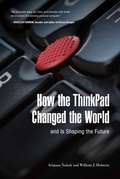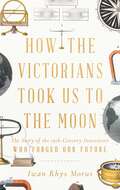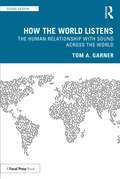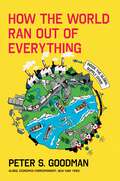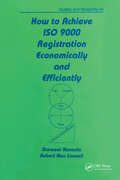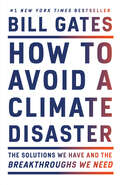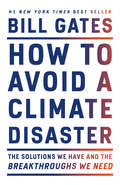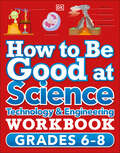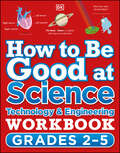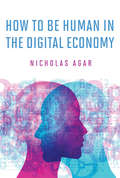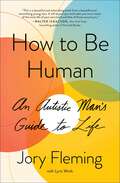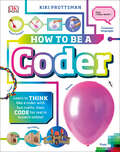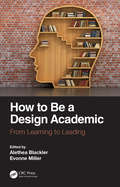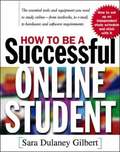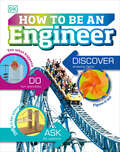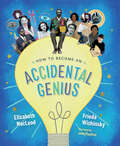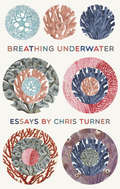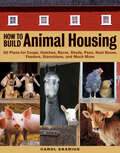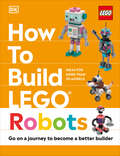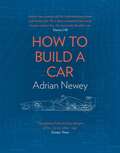- Table View
- List View
How the ThinkPad Changed the World—and Is Shaping the Future
by William Holstein Arimasa NaitohThe ThinkPad notebook computer has been at the center of the digital revolution that has transformed millions of lives around the world, allowing users to obtain access to their documents, pictures and other personal data from virtually anywhere at any time. More than 100 million ThinkPads have been sold since they were introduced in 1992, some twenty-five years ago. ThinkPads played a prominent role in NASA's space exploration and at the International Space Station. They accompanied explorers who traversed the entire length of the Nile River and conquered Mount Everest. ThinkPads also played a major role in changing the very architecture of how humanity's knowledge is stored and made available.In this book, Arimasa Naitoh, the father of the ThinkPad, collaborates with American business journalist and author William J. Holstein to write candidly about the incredible technological and personal struggles he and fellow engineers faced. And he offers his vision of the future of mobile computing—because this revolution is not even close to being finished.
How the Victorians Took Us to the Moon: The Story of the 19th-Century Innovators Who Forged Our Future
by Iwan Rhys MorusThe rich and fascinating history of the scientific revolution of the Victorian Era, leading to transformative advances in the twentieth and twenty-first centuries.The Victorians invented the idea of the future. They saw it as an undiscovered country, one ripe for exploration and colonization. And to get us there, they created a new way of ordering and transforming nature, built on grand designs and the mass-mobilization of the resources of the British Empire. With their expert culture of accuracy and precision, they created telegraphs and telephones, electric trams and railways, built machines that could think, and devised engines that could reach for the skies. When Cyrus Field&’s audacious plan to lay a telegraph cable across the Atlantic finally succeeded in 1866, it showed how science, properly disciplined, could make new worlds. As crowds flocked to the Great Exhibition of 1851 and the exhibitions its success inaugurated, they came to see the future made fact—to see the future being built before their eyes. In this rich and absorbing book, a distinguished historian of science tells the story of how this future was made. From Charles Babbage&’s dream of mechanizing mathematics to Isambard Kingdom Brunel&’s tunnel beneath the Thames to George&’s Cayley&’s fantasies of powered flight and Nikola Tesla&’s visions of an electrical world, it is a story of towering personalities, clashing ambitions, furious rivalries and conflicting cultures—a rich tapestry of remarkable lives that transformed the world beyond recognition and ultimately took mankind to the Moon
How the World Listens: The Human Relationship with Sound across the World (Sound Design)
by Tom A. GarnerHow the World Listens explores our everyday and professional interactions with sound. The book aims to uncover the human relationship with sound across the world and to reveal practical ways in which a better understanding of listening can help us in our daily lives. This book asks how sound is perceived, expressed and interacted with in both remarkably similar and dramatically different ways across the world. Using findings from a new scientific study, conducted exclusively for this book, we embark on a globe-trotting adventure across more than thirty countries, through exclusive interviews with more than fifty individuals from all walks of life, from acousticians and film composers to human resource managers and costumiers. How the World Listens is essential reading for anyone with an interest in human relationships with sound, including but not limited to sound design and music composition professionals, teachers and researchers.
How the World Ran Out of Everything: Inside the Global Supply Chain
by Peter S. GoodmanBy the New York Times’s Global Economics Correspondent, an extraordinary journey to understand the worldwide supply chain—exposing both the fascinating pathways of manufacturing and transportation that bring products to your doorstep, and the ruthless business logic that has left local communities at the mercy of a complex and fragile network for their basic necessities."A tale that will change how you look at the world." —Mark LeibovichOne of Foreign Policy's "Most Anticipated Books of 2024"How does the wealthiest country on earth run out of protective gear in the middle of a public health catastrophe? How do its parents find themselves unable to locate crucially needed infant formula? How do its largest companies spend billions of dollars making cars that no one can drive for a lack of chips?The last few years have radically highlighted the intricacy and fragility of the global supply chain. Enormous ships were stuck at sea, warehouses overflowed, and delivery trucks stalled. The result was a scarcity of everything from breakfast cereal to medical devices, from frivolous goods to lifesaving necessities. And while the scale of the pandemic shock was unprecedented, it underscored the troubling reality that the system was fundamentally at risk of descending into chaos all along. And it still is. Sabotaged by financial interests, loss of transparency in markets, and worsening working conditions for the people tasked with keeping the gears turning, our global supply chain has become perpetually on the brink of collapse.In How the World Ran Out of Everything, award-winning journalist Peter S. Goodman reveals the fascinating innerworkings of our supply chain and the factors that have led to its constant, dangerous vulnerability. His reporting takes readers deep into the elaborate system, showcasing the triumphs and struggles of the human players who operate it—from factories in Asia and an almond grower in Northern California, to a group of striking railroad workers in Texas, to a truck driver who Goodman accompanies across hundreds of miles of the Great Plains. Through their stories, Goodman weaves a powerful argument for reforming a supply chain to become truly reliable and resilient, demanding a radical redrawing of the bargain between labor and shareholders, and deeper attention paid to how we get the things we need.From one of the most respected economic journalists working today, How the World Ran Out of Everything is a fiercely smart, deeply informative look at how our supply chain operates, and why its reform is crucial—not only to avoid dysfunction in our day to day lives, but to protect the fate of our global fortunes.
How to Achieve ISO 9000 Registration Economically and Efficiently
by Gurmeet Naroola Robert Moe ConnellAdopting a hands-on approach, this work shows how to achieve ISO 9000 registration efficiently and economically, through the TAP-PDSA (Train, Audit and Plan / Plan, Do, Study, Act) method. It explains issues encountered in registering, providing real examples, and addresses the functions of a registrar, the importance of choosing a registrar early, and the criteria of registrar selection. The primary goals of registration - to improve quality, achieve customer satisfaction and increase profitability - are stressed.
How to Argue With a Meat Eater (And Win Every Time)
by Ed WintersAn empowering and deeply informative book – MobyNEW UPDATED EDITIONChallenge their beliefs; change the worldIf you are a vegan, you’ll know all too well how provocative it can be – you never know when you’ll be challenged or how. But being able to face down and rebut arguments against veganism is hugely important. Not just because many of the arguments lack substance, but because every interaction provides a pivotal moment to create change.Now with 7 new arguments, How to Argue With a Meat Eater will teach you to not only become a skilled debater, sharing the secrets of renowned vegan educator Ed Winters, but it will arm you with powerful facts and insights that will give pause to even the most devout meat eater.Providing you with the knowledge to become a better conversationalist and critical thinker, and the motivation to create a more ethical, kind and sustainable world, let this book be your guide and inspiration to know that, no matter what the argument, you can win every time.
How to Avoid a Climate Disaster: The Solutions We Have and the Breakthroughs We Need
by Bill GatesIn this urgent, singularly authoritative book, Bill Gates sets out a wide-ranging, practical--and accessible--plan for how the world can get to zero greenhouse gas emissions in time to avoid an irreversibleclimate catastrophe.Bill Gates has spent a decade investigating the causes and effects of climate change. With the help and guidance of experts in the fields of physics, chemistry, biology, engineering, political science and finance, he has focused on exactly what must be done in order to stop the planet's slide toward certain environmental disaster. In this book, he not only gathers together all the information we need to fully grasp how important it is that we work towardnet-zero emissions of greenhouse gases but also details exactly what we need to do to achieve this profoundly important goal. He gives us a clear-eyed description of the challenges we face. He describes the areas in which technology is already helping to reduce emissions; where and how the current technology can be made to function more effectively; where breakthrough technologies are needed, and who is working on these essential innovations. Finally, he lays out a concrete plan for achieving the goal of zero emissions--suggesting not only policies that governments should adopt, but what we as individuals can do to keep our government, our employers and ourselves accountable in this crucial enterprise.As Bill Gates makes clear, achieving zero emissions will not be simple or easy to do, but by following the guidelines he sets out here, it is a goal firmly within our reach.
How to Avoid a Climate Disaster: The Solutions We Have and the Breakthroughs We Need
by Bill GatesIn this urgent, authoritative book, Bill Gates sets out a wide-ranging, practical--and accessible--plan for how the world can get to zero greenhouse gas emissions in time to avoid a climate catastrophe. <P><P>Bill Gates has spent a decade investigating the causes and effects of climate change. With the help of experts in the fields of physics, chemistry, biology, engineering, political science, and finance, he has focused on what must be done in order to stop the planet's slide to certain environmental disaster. In this book, he not only explains why we need to work toward net-zero emissions of greenhouse gases, but also details what we need to do to achieve this profoundly important goal. <P><P>He gives us a clear-eyed description of the challenges we face. Drawing on his understanding of innovation and what it takes to get new ideas into the market, he describes the areas in which technology is already helping to reduce emissions, where and how the current technology can be made to function more effectively, where breakthrough technologies are needed, and who is working on these essential innovations. Finally, he lays out a concrete, practical plan for achieving the goal of zero emissions--suggesting not only policies that governments should adopt, but what we as individuals can do to keep our government, our employers, and ourselves accountable in this crucial enterprise. <P><P>As Bill Gates makes clear, achieving zero emissions will not be simple or easy to do, but if we follow the plan he sets out here, it is a goal firmly within our reach. <P><P><b>A New York Times Bestseller</b>
How to Be Good at Science, Technology and Engineering Workbook, Grade 6-8 (DK How to Be Good at)
by DKGain a complete understanding of Grades 6, 7 and 8 STEM subjects.From atoms and rocketships to vaccines and the human nervous system, this fully illustrated home learning workbook will help your child be at the top of their science class!This engaging science book for kids makes tricky topics and challenging concepts completely crystal clear! Here&’s what&’s inside: • Covers the core STEM topics, from biology, chemistry and physics, to technology. • Clearly laid out with easy-to-follow instructions for children to use by themselves. • Answers are given at the back of the book. • Practice questions and practical exercises to help expand your child&’s knowledge of the subject. Take your child&’s STEM learning to the next levelDid you know that many plants have a transport system to carry water and nutrients wherever they are needed? Or that most power stations around the world burn fossil fuels to make electricity? Packed with fascinating facts, fun graphics and step-by-step explanations, this brilliant visual workbook makes understanding science, technology and engineering super simple! It&’s perfect for extra science revision practice before an important test. Perfect for children ages 11-14, this colorful science practice book covers all the key areas of the school curriculum for this level. It includes genes and DNA, molecules, chemical reactions, the periodic table, heat transfer, electricity and magnetism, seasons and climate zones, and lots more. And there are answers at the back to check that you're on the right path.This engaging and clear science workbook accompanies How to be Good at Science, Technology, and Engineering Grade 2-5 which covers ages 7-11 (Grades 2, 3, 4 and 5).Discover How to be Good at other subjectsDK&’s successful How to be Good at... workbook series provides your child with the tools to learn how to look at the world around them and figure out how it works. There are more books to discover! Learn everything they need to know about math through eye-catching illustrations and easy-to-follow instructions with How to Be Good at Math.
How to Be Good at Science, Technology and Engineering Workbook, Grades 2-5 (DK How to Be Good at)
by DKHelp your child master Grade 2 to 5 STEM subjects and become a science superstar!From learning how the heart works to understanding what evolution is, this fully illustrated home learning workbook makes grasping science, technology and engineering as easy as ABC.This engaging science book for kids makes tricky topics and challenging concepts completely crystal clear! Here&’s what&’s inside: • Covers the core STEM topics for grades 2-5, from biology, chemistry and physics to technology. • Clearly laid out with easy-to-follow instructions for children to use by themselves. • Answers are given at the back of the book. • Practice questions and practical exercises to help expand your child&’s knowledge of the subject. Inspire your child with scienceDid you know that the human skeleton is made up of 206 bones? Or that the Earth&’s human population has quadrupled in the last hundred years? Packed with fascinating facts, fun graphics and step-by-step explanations, this brilliant visual workbook will keep budding scientists and engineers engaged. It helps kids understand what they&’ve learned in school and gives them extra science revision practice before an important test. Perfect for children ages 7-11, this colorful science practice book covers all the key areas of the school curriculum for this level. It includes the human body, animal and plant life, evolution, states of matter, energy, simple mechanics, the Earth, Moon and Sun, and lots more. And there are answers at the back to check that you&’re on the right path.This engaging and clear science workbook accompanies How to be Good at Science, Technology, and Engineering Grade 5-8 which covers ages 11-14 (Grades 5, 6, 7 and 8).Discover How to be Good in other subjectsDK&’s successful How to be Good at... workbook series provides your child with the tools to learn how to look at the world around them and figure out how it works. There are more books to discover! Learn everything they need to know about math through eye-catching illustrations and easy-to-follow instructions with How to Be Good at Math.
How to Be Human in the Digital Economy (The\mit Press Ser.)
by Nicholas AgarAn argument in favor of finding a place for humans (and humanness) in the future digital economy.In the digital economy, accountants, baristas, and cashiers can be automated out of employment; so can surgeons, airline pilots, and cab drivers. Machines will be able to do these jobs more efficiently, accurately, and inexpensively. But, Nicholas Agar warns in this provocative book, these developments could result in a radically disempowered humanity.The digital revolution has brought us new gadgets and new things to do with them. The digital revolution also brings the digital economy, with machines capable of doing humans' jobs. Agar explains that developments in artificial intelligence enable computers to take over not just routine tasks but also the kind of “mind work” that previously relied on human intellect, and that this threatens human agency. The solution, Agar argues, is a hybrid social-digital economy. The key value of the digital economy is efficiency. The key value of the social economy is humanness.A social economy would be centered on connections between human minds. We should reject some digital automation because machines will always be poor substitutes for humans in roles that involve direct contact with other humans. A machine can count out pills and pour out coffee, but we want our nurses and baristas to have minds like ours. In a hybrid social-digital economy, people do the jobs for which feelings matter and machines take on data-intensive work. But humans will have to insist on their relevance in a digital age.
How to Be Human: An Autistic Man's Guide to Life
by Jory FlemingA &“beautiful and astonishing&” (Walter Isaacson, # 1 New York Times bestselling author of The Code Breaker) narrative that examines the many ways to be fully human, told by the first young adult with autism to attend Oxford University as a Rhodes Scholar. As a child, Jory Fleming was wracked by uncontrollable tantrums, had no tolerance for people, and couldn&’t manage the outside world. Slightly more than a decade later, he was bound for England, selected to attend one of the world&’s premier universities. How to Be Human is a &“profound, thought-provoking&” (Barry M. Pizant, PhD, author of Uniquely Human) exploration of life amid a world constructed for neurotypical brains when yours is not. But the miracle of this book is that instead of dwelling on Jory&’s limitations, those who inhabit the neurotypical world will begin to better understand their own: they will contemplate what language cannot say, how linear thinking leads to dead ends, and how nefarious emotions can be, particularly when, in Jory&’s words, they are &“weaponized.&” Through a series of deep, personal conversations with writer Lyric Winik, Jory makes a compelling case for logical empathy based on rational thought, asks why we tolerate friends who see us as a means to an end, and explains why he believes personality is a choice. Most movingly, he discusses how, after many hardships, he maintains a deep, abiding faith: &“With people, I don&’t understand what goes in and what comes out, and how to relate,&” he says. &“But I can always reconnect with my relationship with my Creator.&” Join Jory and Lyric as they examine what it means to be human and ultimately how each of us might become a better one. Jory asks us to consider: Who has value? What is a disability? And how do we correct the imbalances we see in the world? How to Be Human shows us the ways a beautifully different mind can express the very best of our shared humanity.
How to Be Your Own Architect (2nd edition)
by Murray C. Goddard Mike Wolverton Ruth WolvertonBuilding a house with an architect should be fun. The experience should be one of the most exciting and creative efforts in one's entire life. It can only be so however, if the client and the architect enjoy that special rapport that comes from an understanding and appreciation of one another's respective roles.
How to Be a Coder: Learn to Think like a Coder with Fun Activities, then Code in Scratch 3.0 Online (Careers for Kids)
by Kiki ProttsmanLearn to think like a coder without a computer! Each of the fun craft activities included in this book will teach you about a key concept of computer programming and can be done completely offline. Then you can put your skills into practice by trying out the simple programs provided in the online, child-friendly computer language Scratch.This crafty coding book breaks down the principles of coding into bite-sized chunks that will get you thinking like a computer scientist in no time. Learn about loops by making a friendship bracelet, find out about programming by planning a scavenger hunt, and discover how functions work with paper fortune tellers. Children can then use their new knowledge to code for real by following the clear instructions to build programs in Scratch 3.0.Perfect for kids aged 7-9, the various STEAM activities will help teach children the crucial skills of logical thinking that will give them a head-start for when they begin programming on a computer. Famous scientist pages teach children about coding pioneers, such as Alan Turing and Katherine Johnson, and topic pages, such as the Internet, give kids a wider understanding of the subject.Written by computer science expert Kiki Prottsman, How to be a Coder is so much fun kids won't realize they're learning!
How to Be a Design Academic: From Learning to Leading
by Alethea Blackler and Evonne MillerThis book is about how to be a design academic. In another words, how to manage the various challenges, requirements, and processes that come with both the everyday and extra-ordinary parts of an academic role in design fields (from architecture, urban design, interior design and landscape architecture, to fashion, industrial, interaction and graphic design). The book is organised in two parts – Part 1, Starting out and Part 2, Becoming a Leader. It includes real-life experiences of actual academics and offers a wide range of experiences of authors from early career researchers to full professors and heads of schools. It contains all aspects of academic life, including the highs and lows of teaching, research, leadership, and managing your working life and your career. This book is perfect for academics, aspiring academics, and research students in a wide range of design fields.
How to Be a Successful Online Student
by Sara Dulaney GilbertAccording to the National Center for Education Statistics more than 85% of public universities offer non-residential long-distance learning and courses, degrees, or career credentials.
How to Be an Engineer (Careers for Kids)
by Carol VordermanClearly explained engineering concepts and fun, simple projects give kids ages 7-9 the chance to put their STEAM knowledge to the test!Teach kids to think like an engineer! The engaging projects in this book will encourage kids to investigate using items from around the house. Build a robot arm out of rulers; learn about jet propulsion with balloons; crush toilet-paper rolls to explore materials; and much more. Read about how engineers use STEAM subjects and their imaginations to think critically and solve problems. Be inspired by engineering heroes such as Leonardo da Vinci, Mae Jemison, and Elon Musk. Fun questions, engineering experiments, and real-life scenarios come together to make engineering relevant. In How to Be an Engineer, the emphasis is on inspiring kids, which means less time at a computer and more time exploring in the real world.
How to Become a Mercenary: The Ultimate Guide to the Weapons, Training, and Tactics of the Modern Warrior-for-Hire
by Barry DaviesFor anyone who's ever considered a career as a warrior-for-hire—or who just wants to learn more about the lifestyle—How to Become a Mercenary is the ultimate guide to all the history, training, and equipment information you'll ever need! Mercenaries—who are often trained as part of the best Special Forces, including American Delta Force, British SAS, French Foreign Legion, Marines, SBS, SEALs, and many others—perform one of the most dangerous and feared jobs in the world. Their task is to go into remote locations and remove their targets by any means necessary. They are &“hired hands,&” and have no remorse for their actions. Now, along with Soldier of Fortune magazine, Barry Davies teaches you the training and knowledge that goes into being a mercenary, as well as the history of the profession and how it has evolved. How to Become a Mercenary will teach you everything you&’ve ever needed to know about becoming a mercenary, and also how to excel at it with information on weapons, escape plans, and overall safety. You will learn: • Where and how to find work • How to understand and apply the most modern tactics • What languages to master • Which weapons are preferred • How to disappear after you&’ve completed your job It&’s always been about the money, but in this book, you will learn all the skills that you must acquire before you take your first job. Just remember: Article 47 of the Geneva Convention states that &“a mercenary shall not have the right to be a combatant or a prisoner of war.&” Getting caught is not an option, and in this manual, you will learn how to avoid that at all costs.
How to Become a Navy SEAL: Everything You Need to Know to Become a Member of the US Navy's Elite Force
by Don MannDo you want to be a member of one of the world's most elite special operations forces? Not everyone has what it takes to become a Navy SEAL (Sea, Air, and Land). The training required--and the job itself--is exhausting and demanding, but also exhilarating and highly respected. If you or someone you know is up for the challenge, this book has everything you need to know, from schooling and training to pay range, placement, qualifications, and what you can expect after you become a SEAL. To become a SEAL in the Naval Special Warfare/Naval Special Operations (NSW/NSO) community, you must first go through what is often considered to be the most physically and mentally demanding military training in the world. With this book, you can prepare yourself by learning what to expect before taking on the ruthless and rewarding job of defending your country against foes around the world. This guide includes advice from current and former Navy SEALs on direct action warfare, special reconnaissance, counterterrorism, and foreign internal defense. When there's nowhere else to turn, Navy SEALs are in their element. They achieve the impossible by way of conditioned response, sheer willpower, and absolute dedication to their training, their missions and their fellow special ops team members.
How to Become an Accidental Genius (Accidental Series #1)
by Frieda Wishinsky Elizabeth MacLeodDon't be afraid to try! Make connections! Be persistent! Ask questions and never take no for an answer! Learn the secrets and amazing stories of successful inventors! <P><P>How to Become an Accidental Genius is full of inspiring tales of famous and lesser-known inventors who have changed the world, from George Washington Carver, Mary Anderson (inventor of the windshield wiper) and inventor and actress Hedy Lamarr to Frank Epperson (of Popsicle fame) and Mary Sherman Morgan (The Woman Who Saved the U.S. Space Race). Readers will be amazed at the inventiveness of these geniuses. The book focuses on inventors from North America but includes stories from around the world. Organized into eleven chapters that highlight the qualities inventors have in common, the book also features profiles of inventive kids and teenagers.
How to Breathe Underwater
by Chris TurnerThe essays and reportage in How to Breathe Underwater offer a panoramic overview of this age of radical change-from the online gambling boom in the Caribbean to Cyberjaya, the Malaysian government's attempt to build its own Silicon Valley; from video game design to digital-age tabloid journalism to the artistry of The Simpsons; and from the fate of the Great Barrier Reef to Cuba's economic limbo after the fall of the Soviet empire. In field reports that survey the rise of the internet in the 1990s, analyze the changing nature of mass culture in the digital age, and provide a multifaceted look at how human industry is shaping the planet's foundations, this collection presents a fractal portrait of a society in rapid flux. Chris Turner is the author of four previous books, a nine-time National Magazine Award winner and a sought-after speaker on the rise of the global green economy, as well as a celebrated feature writer for The Walrus, Canadian Geographic, The Globe & Mail and other major publications. His lively and passionate reportage, along with his incisive essays and shrewd cultural criticism, have for the past fifteen years made essential contributions to the debates on our climate, culture, and technology. They are collected here for the first time.Praise for How To Breathe Underwater"Chris Turner is among the best magazine writers on the planet. His writing is so beautiful, wry and well-reported that it's spellbinding. And spellbreaking: He wakes you up, makes you sit upright and look afresh at our culture, our climate, and where we need to go. This is literary nonfiction at its finest."-Clive Thompson, Wired columnist and author of Smarter Than You Think"Chris Turner is the master of long-form journalism in Canada, a smart, funny, and endlessly curious envoy to everywhere. This collection gathers his best work, forging links of meaning in a chain of superb reporting and writing; readers will see many choice pieces and realize, maybe for the first time, that they were all fashioned by the same indefatigable intelligence."-Mark Kingwell, the author of A Civil Tongue"Whatever you choose to call this kind of stylishly reported, deeply engaged, richly nuanced, gorgeously written nonfiction--saturation reportage, new journalism, longform writing--it without question qualifies as real literature. It's the only kind of journalism that gets remembered, and the only kind that produces real change. Chris Turner has been writing it since he started taking notes."-Ian Brown, author of The Boy in the Moon and Globe & Mail feature writer
How to Build Animal Housing: 60 Plans for Coops, Hutches, Barns, Sheds, Pens, Nestboxes, Feeders, Stanchions, and Much More
by Carol EkariusWith dozens of adaptable plans for sheds, coops, hutches, multipurpose barns, windbreaks, and shade structures, this guide covers everything you need to know to build safe and sturdy housing for your animals. Stressing the importance of evaluating your goals, planning ahead, and budgeting accordingly, Carol Ekarius helps you determine the best structure for your particular situation and offers expert advice on tools and construction techniques. Build a functional and comfortable house for your animals that they’ll be proud to call home.
How to Build LEGO Robots (How to Build LEGO)
by Jessica FarrellDiscover how to build your very own incredible LEGO® robots! With building instructions for more than 40 awesome creations!Be inspired by more than 40 LEGO robot ideas, from a hip-hop bot to a space probe and an underwater explorer.Each robot idea is broken down into three, four, or five important building steps.Learn essential building techniques to create articulated arms, grabbers, power displays, textures, and much more, for your own wonderful models.You can build anything.
How to Build Your Own Spaceship
by Piers BizonyLadies and gentlemen, start your spaceships! Personal space travel is no longer the stuff of science fiction. The future is here: Civilians are launching into orbit. As early as 2010 paying customers will have the opportunity to experience weightlessness, courtesy of Virgin Galactic's inaugural launch. How to Build Your Own Spaceship takes readers on a fun and quirky trip to the forefront of commercial space travel-the latest technology, the major business players, and the personal and financial benefits that are ripe for the picking. Science-writer Piers Bizony's breadth of knowledge, quick wit, and no-nonsense explanations of the hard science in this emerging arena will satisfy even the most dedicated space fanatics. With practical advice (from picking the best jet fuel to funding your own fleet of space crafts), unbelievable space facts, and fascinating photos, Bizony's user-friendly guide to blasting off is a must-have ticket to the final frontier. .
